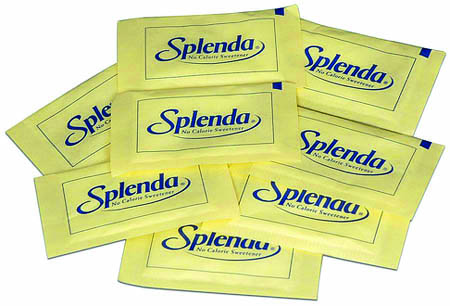Compiled by Caity Hui
Artificial Obesity
New evidence suggests that diet soft drinks and other artificially sweetened products may induce weight gain, as well as increasing our risk for Type 2 diabetes. According to former McGill researcher Dana Small, sugar substitutes, like aspartame and sucralose, taste more intensely sweet than regular sugar. Those who taste these substitutes on a regular basis could develop altered taste receptors so that less sweet, healthier foods are not as enjoyable.
Along with altering taste receptors, research shows that artificial sweeteners interfere with brain chemistry, and the hormones that regulate appetite and feelings of fullness. Artificial sweeteners change the way the body interprets ‘sweet.’ Since sweet taste no longer signals the arrival of calories, the body will not release insulin when it senses this taste, as ‘sweet’ is no longer a good predictor of the arrival of energy. This makes it more difficult for the body to rely on its mechanisms for regulating eating, and the sensation of hunger, often resulting in weight gain. For example, rats fed artificial sweetener experienced weight gain, and a higher than normal blood pressure.
Nicola Kettlitza, president of Coca-Cola Canada argues against this research. She told CBC News that artificial sweeteners are safe, and approved by Health Canada.
Scientists hope the phenomenon known as de-extinction will reverse the expiration date of species. De-extinction, the process of bringing back extinct animal and plant species, has recently seen advances due to progress in genetic sequencing and molecular biology techniques.
Non-profit organization Revive & Restore is taking the lead on efforts to bring back the passenger pigeon—once the most common American bird—as well as contributing to the revival of other extinct species, such as the European aurochs, Pyrenean ibexes, Tasmanian tigers, and even wooly mammoths.
To restore the passenger pigeon, scientists plan to collect information on its genome through sequencing methods. They will then identify mutations unique to the passenger pigeon by comparing its genome to the genome of its cousin, the rock pigeon. Next, passenger pigeon stem cells will be created by swapping out key bits of passenger pigeon DNA for corresponding rock pigeon stem cells. These will be converted to germ cells, and inserted into rock pigeon eggs. If the passenger pigeons hatch from the eggs and are able to mate, scientists will have successfully brought the passenger pigeon back from the dead. In theory, this technique could be used on numerous extinct species.
However, this research brings up an important question. Now that we know we can bring back an extinct species, should we?
The company Modern Meadow aims to use 3D printing technology to print artificial raw meat. Meat consumption reaches around 240 billion kilograms each year, and this number is increasing. As this overconsumption poses problems with regards to environmental degradation, animal cruelty, and the spread of dangerous diseases, 3D meat printing is a growing technological and scientific field.
The process of 3D printing involves producing solid objects from digital models, where tiny droplets are “printed” layer by layer through a carefully controlled inkjet nozzle to form the structure.
To print meat, Modern Meadow employs a method of bio-printing. First, scientists acquire stem cells from animals through a biopsy—stem cells can replicate themselves many times in order to increase in volume. Once these cells have replicated several times, they are put into a bio-cartridge. This 3D printer cartridge contains bio-ink, which, as opposed to regular ink, is made of hundreds of thousands of live cells. The meat is then printed into its desired shape, and the bio-ink particles naturally fuse to form the living tissue.
Although 3D printing has been around for years, bio-printing is more difficult, because scientists are required to print live cells. So far, the team at Modern Meadow has produced a prototype of the meat, but it is not yet available for consumption.











